Several members had not previously used burls when making woodturning projects. Today’s discussion gave more information about using them.
Scientists have speculated that burls may be caused by stress on trees due to mechanical injuries or insects or by a bacterium such as the crown gall bacterium. They are similar to a tumor or cancer in humans that grows in a nonlinear fashion. Burls are characterized by flames or eyes and especially a random grain. Because there is no side or end grain and instead, grain goes in many directions, it can be easier to turn and sand. Any sharp gouge or carbide tool will cut it. Burls may grow along a tree trunk or at the root. Some articles that tell more about burls can be read at https://schoolofwoodwork.com/burls-on-the-lathe/ , https://www.gardeningknowhow.com/ornamental/trees/tree-burls.htm or http://www.cindydrozda.com/html/Burls.html .
Several sources for burls were mentioned. West Penn Hardwoods has a website with an extensive selection of woods and burls (https://wphardwoods.com/products/categories/burls ) They have 3 football field sized huts containing bins of many woods. The company is very helpful and can show pieces to a buyer before purchased online. They currently ship for free with a $150 purchase. Other sources include https://oregonburls.com/ and https://www.facebook.com/Burlsgalore/ . Contact information for each is on those web pages.
The question was asked: What is the best way to harvest a burl? It’s most typical for burls to be sliced off of trees. In northern California, however, there are roadside stands that sell redwood burls that have been cut from the trees. It’s presented a problem since eventually those harvests can kill the tree. In that regard, it may be better to harvest the whole tree. It may be best to cut the trunk above and below the burl to retain its value, then use the rest of the tree for other projects.
As with other wood pieces, the way to mount a burl on the lathe depends on the piece, it’s shape and characteristics. Many members start between centers then progress to tenons or other techniques for holding the project.
Members showed pictures or projects and discussed techniques for working with burls.
Ken Allen
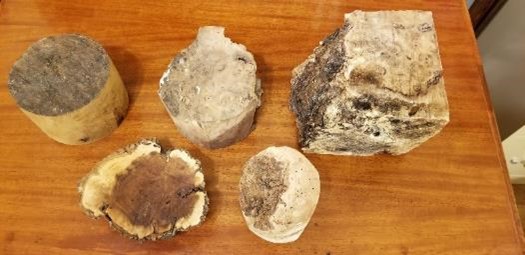
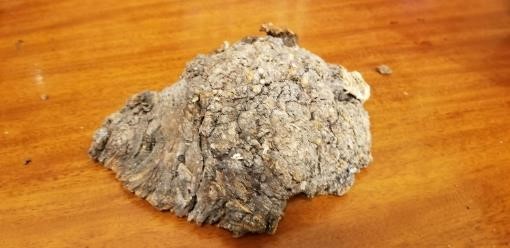
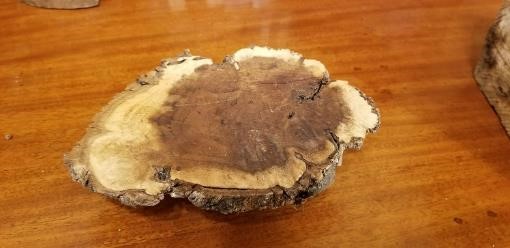
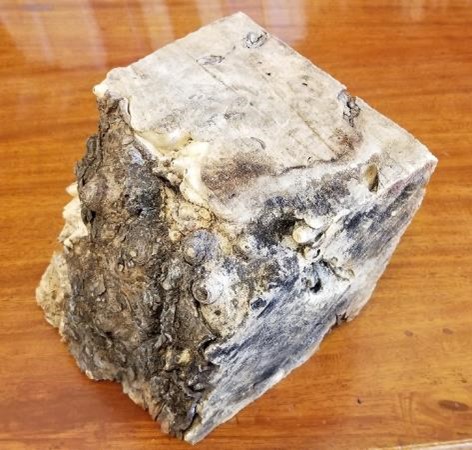
Ken had collected some burls from club wood sales but has not yet worked with burls. It’s difficult to identify the type of wood for each one.
This burl cap could be used for a small bowl.
This view shows the inside of the cap.
The way this was cut makes it difficult to know which way to approach using the burl. Chainsaw cuts are prominent and make it hard to see the grain. As with all woodturning projects, the grain, or in a burl, the random grain, will be visible as the gouge turns it away.
Walt Spencer
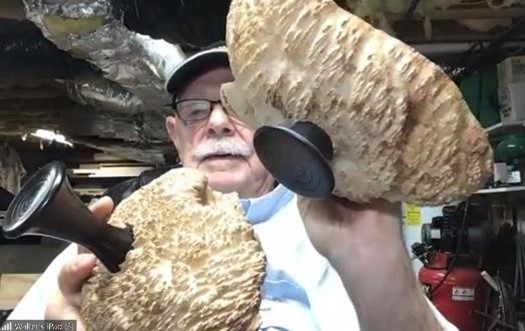
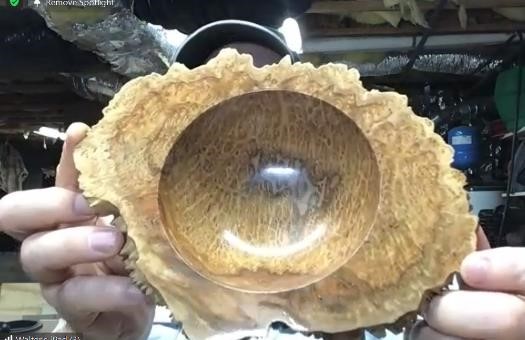

Spence used the natural edge of the burl at the bottom of two bowls he made. He used a Forstner bit to make a hole for the bases.
He used his bowl gouge to hollow out the bowl but was unable to get the top surface flat without using the belt sander. Then he was able to use the vacuum chuck on the inside to hold it.
He used two burls with the purpose of seeing what the grain looked like from the inside out and he wanted to compare the differences.
Mike Mitchell
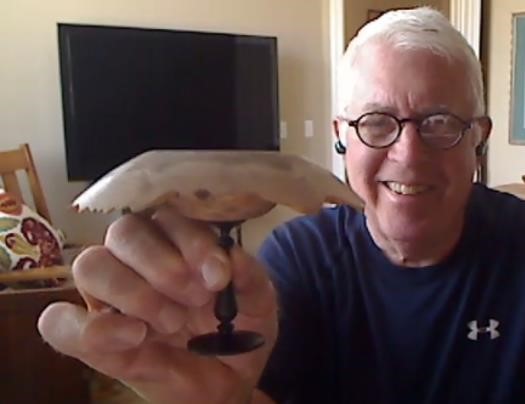
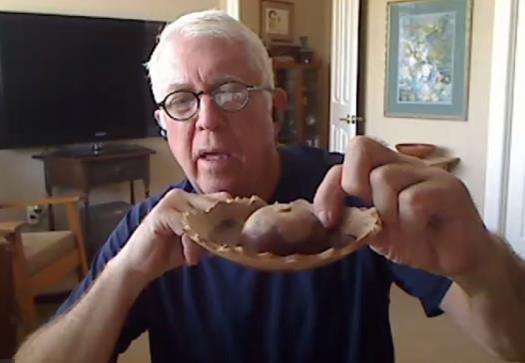

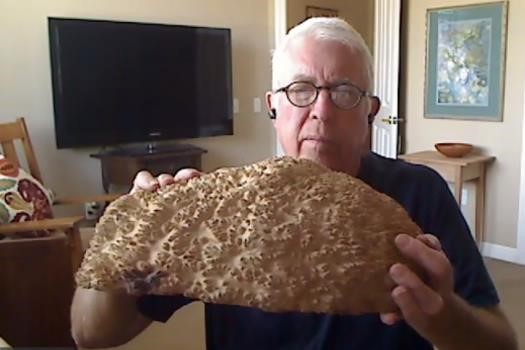
Mike had watched a demo by Cindy Drozda on using a burl cap to make this project and this was his result.
He initially turned it between centers and put a tenon on both sides to hold the project while rounding the top and bottom curves. He retained the natural edge of the burl (the irregular edge).
This large heavy burl may be cut into a few circles for bowls.
Burls can accept dyes well due to the grain going in multiple directions. When using TransTint dyes with denatured alcohol, the dye gives an even color on a burl rather than the lighter and darker values when applying to end grains and side grains. It’s best to add the dyes while the project is still on the lathe. Use a negative rake scraper after the dye dries to lightly cut it accentuates the colors.
Jerry Walters
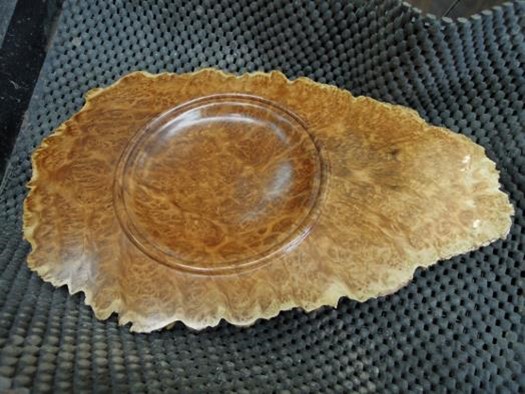
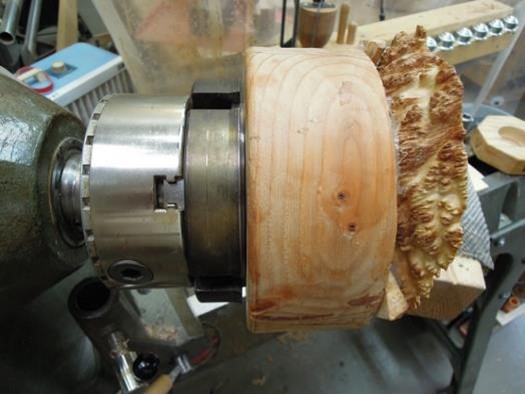
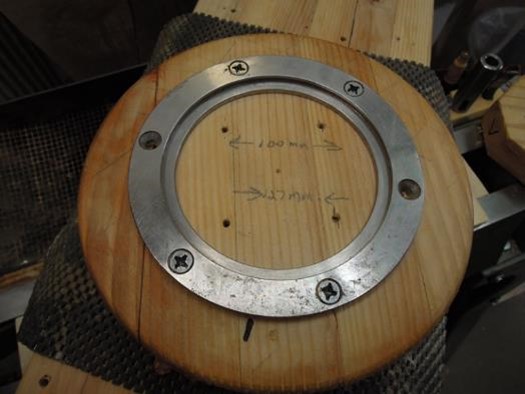
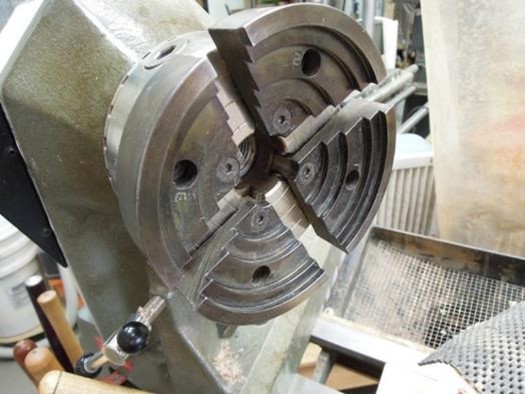
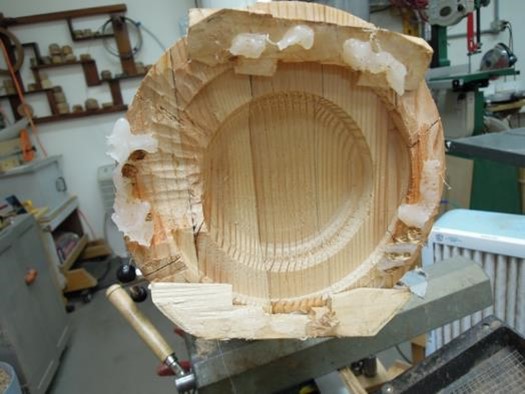
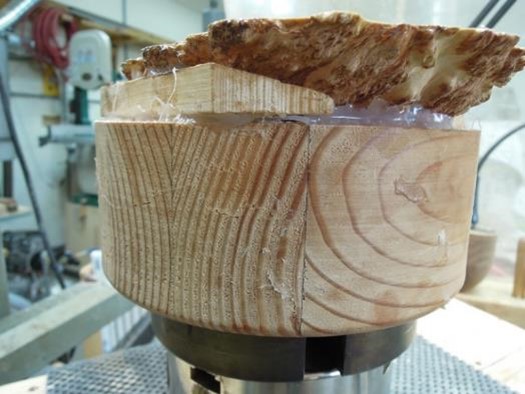
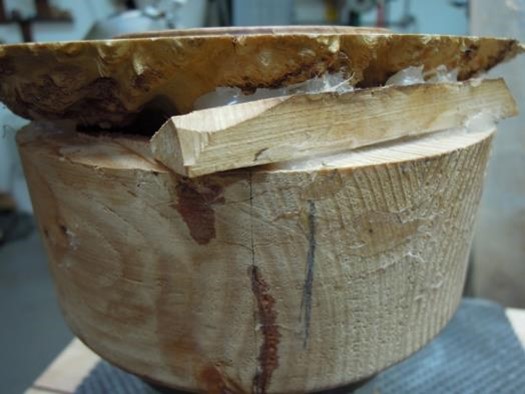
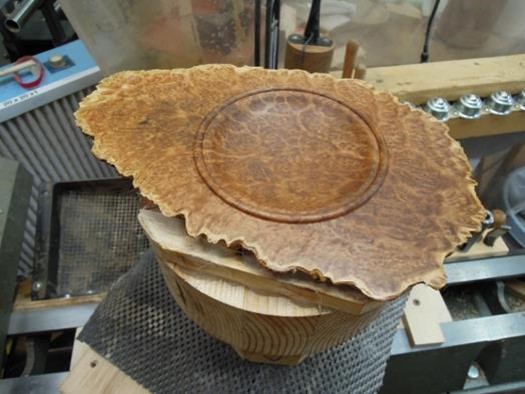
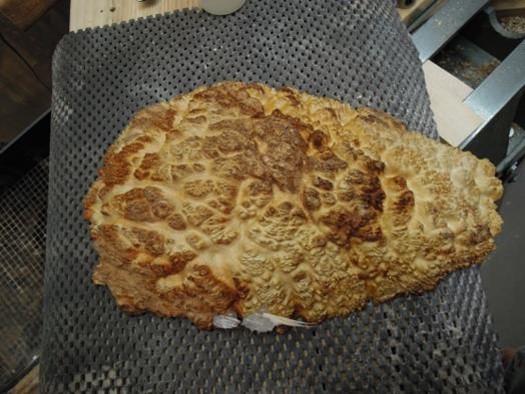

Jerry had recently used a burl cap to make this platter which he finished with Danish oil.
He uses a large glue block and a large chuck to compensate for the imbalance of the odd shaped rotating burl.
He attached the glue block to the chuck with a large faceplate ring.
These are the jaws he uses to hold the ring.
He hollows out the glue block in the best way to fit the burl, leaving a ½” rim for gluing. He sculpts out areas to best fit the shape of the burl.
Wedges are added for strength and a standard hobby grade hot glue holds the project in place. Denatured alcohol will be used later to break the bond of the hot glue to the wood.
Another wedge glued in place.
This is a view of the platter after it was turned while it’s still attached to the glue block.
This shows the base after the hot glue has mostly been removed by soaking with denatured alcohol. He used a dental pick to separate some of the glue and loose bark.
He uses this blaster gun from Harbor Freight to clean the dirt and bark from the surface. He uses powdered baking soda and compressed air and works outside the building. It helps clean the rough side of the burl.
Members wondered about the power to move the soda at a constant rate with a 90 PSI rating.
This video compares the strength of different types of hot glue: https://www.youtube.com/watch?v=hu8sJBctzFc&t=753s
If hot glue doesn’t come off easily, another technique is to heat the wood with a heat gun on a low temperature, turn off the gun, and apply denatured alcohol at the glue-to-wood interfaces. The cohesive quality of the glue changes at 100° F. Two cautions were given: it can be flammable and the heat can scorch the wood.
Dick Kelly
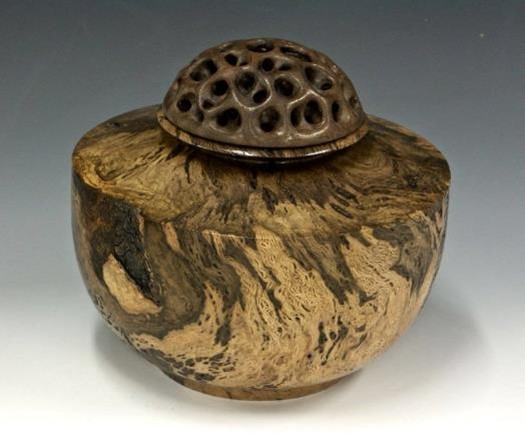
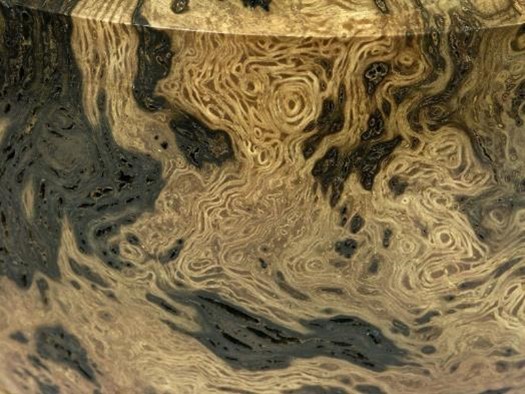
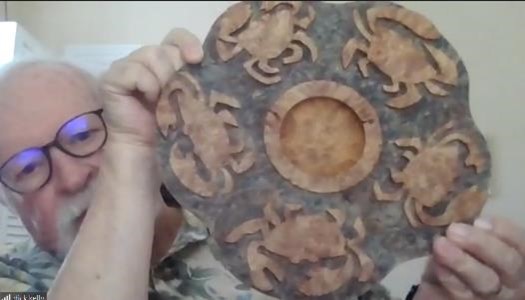
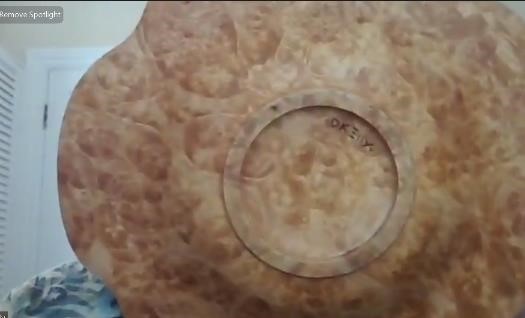
This oak burl container was made by Mark Henry Doolittle. Dick wanted to share it because he has a similar oak burl and wants to make a container from his burl.
This closeup view shows that there are small pits in the wood that could invite filling in order to have a smooth surface. It’s amazing what nature does to trees!
Dick made this piece from a big leaf maple burl. He added color around the crabs to accentuate the burl patterns.
The burl from the bottom of the piece.
Dan Hall
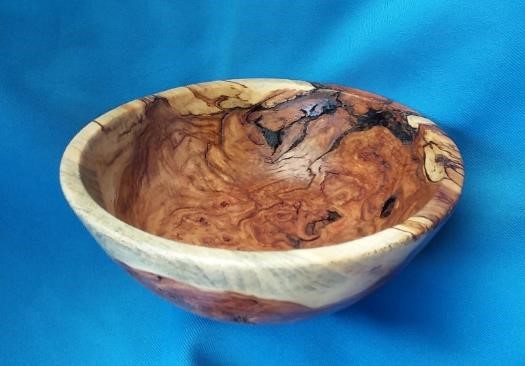
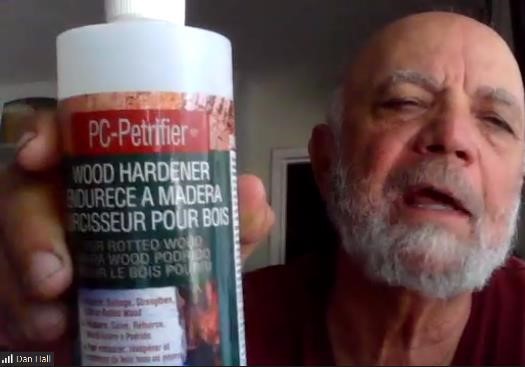
This burl was found at the club wood sale and had been partially shaped. It’s 7” across. Dan used a glue block on the bottom and screwed it into a face plate. It came off and came apart while it was being turned. It’s a soft redwood burl and had to be reglued and treated with wood hardener. The inclusions were filled to hide the cracks when it broke apart.
PC Petrifier is a water-based wood hardener with very little smell. It only penetrates about ¼” at a time so he poured some out, swished it into the bowl, wiped out the excess and then continued to turn a bit at a time, repeating the process until he completed turning. It takes patience but works well. In contrast, Minwax has a wood harder that penetrates deeper but is smelly and ate the foam from his foam brush.
Jim Winge

Jim made this large bowl from one cottonwood burl. He used a screw chuck when holding it on the lathe. He suggested talking to local arborists to see if they will let you know if they are cutting down a tree with a burl. They may charge a fee but otherwise it will be taken to the dump. He remembered one burl that resulted in 6 or 8 bowls.
Susan Kissel
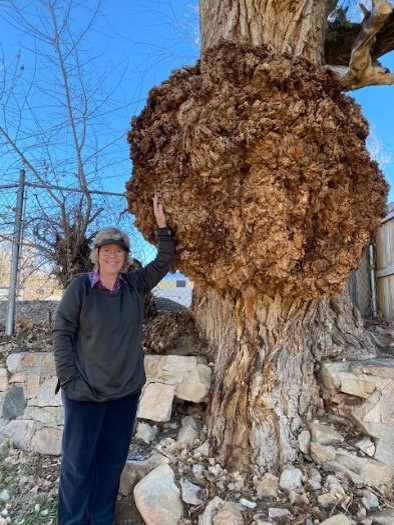
Susan Kissel had found a large burl and shared this picture. It’s about 6’ in diameter and is part of a cottonwood tree. (Woodturners are urged to only admire it …)
Another place to admire burls is along Oak Creek in Sedona where there are sycamore burls.
Notes written by Kathy Allen